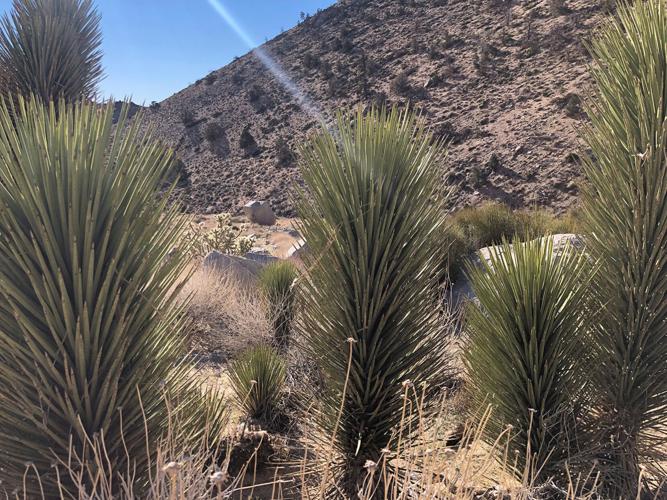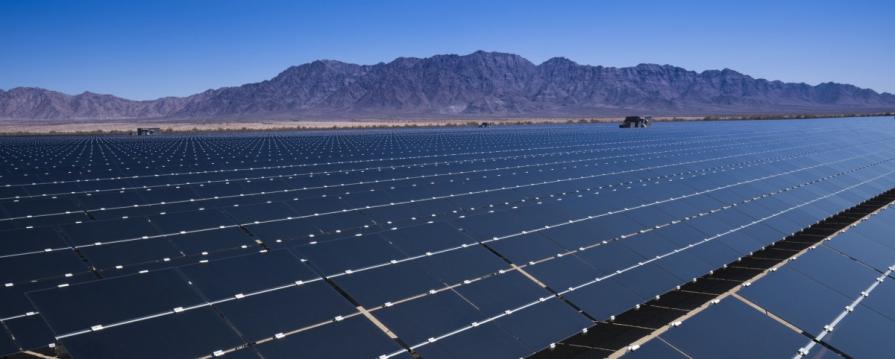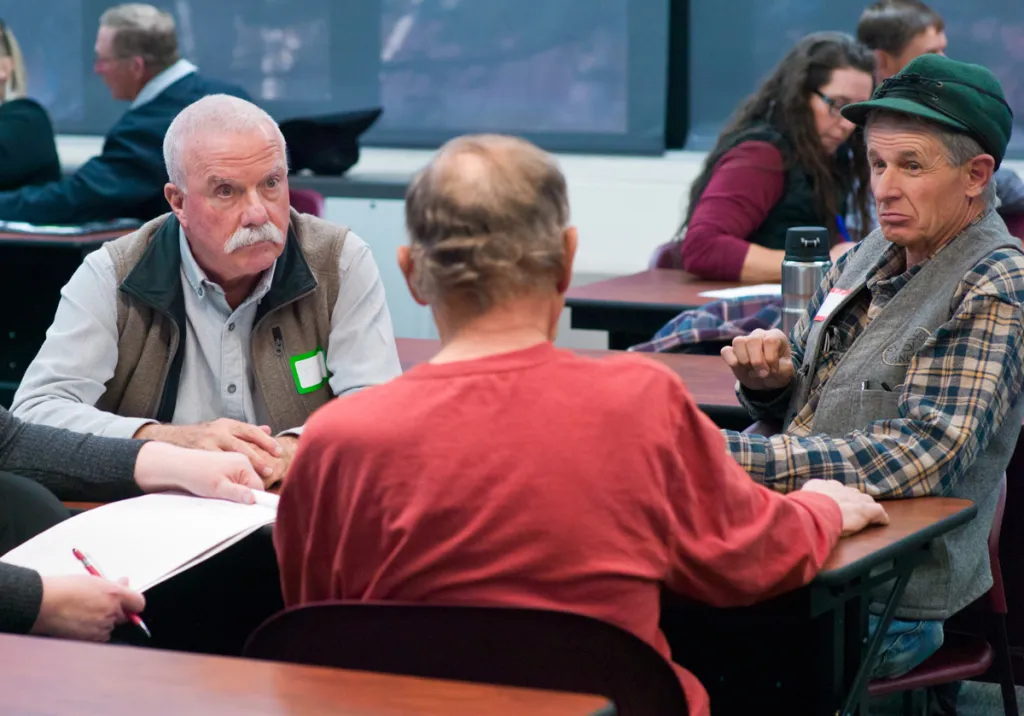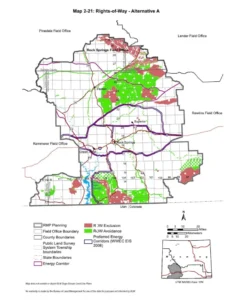Interesting story from E&E News, and no paywall on this one (perhaps because it came as a link from Center for Western Priorities). When groups disagree about a project, it seems like once again the BLM is darned if it does and darned if it doesn’t..in the interests of fair use, I can’t post the whole thing, but there are good parts I am leaving out.
A senior Bureau of Land Management official warned the federal government might be rushing the review of a controversial lithium mine in Nevada that’s at the center of a raging fight over an endangered wildflower, according to an internal email.
“This is a very aggressive schedule that deviates from other project schedules on similar projects completed recently and concurrently at the District and State,” said Scott Distel, a supervisory project manager, in a Dec. 21, 2023, email.
Distel told Douglas Furtado, a BLM district manager in central Nevada, the review of Ioneer’s Rhyolite Ridge project was poised to move forward with limited input. “The groundwater model is approved on 12/26/2023, without any edits or comments that need to be addressed,” he wrote in the email, which was also sent to officials at Ioneer.
The email illuminates the challenges federal regulators face in complying with legally required deadlines for completing environmental reviews of complicated projects under the National Environmental Policy Act. BLM and its parent, the Interior Department, declined to comment on the email, which the Center for Biological Diversity obtained under the Freedom of Information Act and shared with E&E News.
BLM’s ongoing environmental review of Ioneer’s proposed Rhyolite Ridge lithium mine has drawn national attention because of the sprawling mine’s potential impact on the habitat for an endangered desert flower, Tiehm’s buckwheat. The project is in the Silver Peak Range, about 40 miles southwest of Tonopah.
The CBD cited Distel’s email in an unsuccessful request asking BLM to extend the comment period on a draft environmental impact statement the agency released in April. That draft review concluded the mine — through fencing, locked gates and dust-tampering measures — would not drive the endangered wildflower to extinction.
Currently, BLM appears poised to make a decision on the mine in October. Once a record of decision (ROD) is issued, the project is expected to receive a conditional loan of up to $700 million from the Department of Energy.
According to Distel’s email, the revised schedule under NEPA shows BLM approving a “camera ready” final EIS in August along with a briefing at the agency’s headquarters, followed by a final ROD in October.
************
The timing, duration and intensity of environmental reviews have become an issue both within agencies and on Capitol Hill, as regulators review projects needed to produce minerals like lithium while protecting pristine areas and critical habitat.
Distel’s email illuminates the tensions.
Kevin Minoli, a partner at the law firm Alston & Bird and a former career EPA lawyer who served during the Clinton, Bush, Obama and Trump administrations, said the language Distel used about the “very aggressive” schedule is not incredibly unusual for federal officials. But Minoli said it does appear to reflect a federal employee’s concern with the time frame.
“What appears to be the case is the person expressing that they wish they had more time … to do something like this,” said Minoli, who also advises clients on complying with NEPA.
Minoli said the email appears to show BLM complying with revisions to NEPA that came into effect fairly recently through amendments that set two-year time frames for agencies to complete EISs. BLM confirmed the agency is complying with the Fiscal Responsibility Act (FRA) amendment to NEPA, which includes a two-year timeline for EISs.
“What I expect is happening is you’re seeing an agency midaction having to comply with that deadline and some concern about that being expressed,” said Minoli.
But Minoli cautioned against equating longer NEPA reviews with better work, noting that regulators can do good work quickly. He also noted that while some have been pushing for deeper reviews, especially for contentious projects, others have been long fighting to reach a final decision more quickly.
“People are probably unhappy on both sides, it’s a timing question,” he said.
******************
Pat Parenteau, emeritus professor and senior fellow for climate policy at the Vermont Law and Graduate School, said amendments in the FRA don’t change the legal requirements for NEPA reviews. Any issues raised in the email will need to be addressed, said Parenteau, including those tied to the groundwater model, which was highlighted in Distel’s email.
“If this is, in fact, someone within BLM in a position to know, who’s raising questions about the process … if these are not corrected by the time the ROD is issued, it’ll be grounds for a lawsuit,” said Parenteau.
There is language in the law, Parenteau noted, that allows agencies to take more time to conduct reviews and EISs, but that will ultimately be up to BLM. He also emphasized that BLM isn’t alone in facing the pressure caused by artificial deadlines.
“We’re going to see a lot of these cases, a lot of these issues,” he said. “Any time you put artificial deadlines in the law, you run into this problem because it denies the reality of the way the world works.”
****************
Bernard Rowe, managing director of Ioneer, said in a statement last week as the public comment period for the draft EIS closed, that the company has engaged with federal, state and tribal officials, as well as community members, for more than five years, and sought a “new standard for domestic lithium project development.” Added Rowe: “Listening has made our project stronger, and we look forward to addressing feedback to the Bureau of Land Management from the public comment period.”
Conservation groups and tribes disagree and are warning the draft EIS doesn’t give a full picture of just how much water the mine will use. The critics contend the mine could drive the Tiehm’s buckwheat to extinction. The plant was listed as endangered in December 2022.
Currently, eight subpopulations of the plant have been mapped and extensively studied within the mine’s project area. The most recent population census was conducted last May and June and counted 24,916 plants.
In the draft EIS, BLM concluded that while the plant’s desert habitat would be disturbed by construction of the Rhyolite Ridge project, the agency also pointed to steps that Ioneer would take to minimize and mitigate the potential damage. The company also modified its original plan to reduce the environmental impact.
A coalition of groups including the CBD, the Western Shoshone Defense Project, the Sierra Club and Earthworks argued in comments to BLM that the draft EIS is insufficient and fails to fully consider the effect on groundwater and cultural resources
**************
I have much sympathy for the BLM, and wonder whether the FRA timelines are retroactive for ongoing projects. The BLM is definitely “darned if they do and darned if they don’t”. Also, I wonder what the weight of one employee’s concern should be, when the complete array of tedious details of substance and process will no doubt be part of future litigation.







